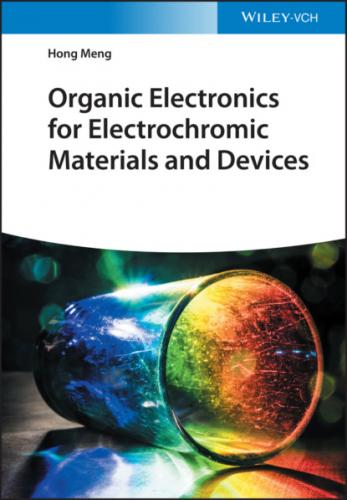Table 2.2 Examples of self‐healingand cross‐linking polymer electrolyte complexes and their respective highest ionic conductivities.
| Electrolyte | Ionic conductivity (S/cm) | Electrochemical window (V) | Application | References |
|---|---|---|---|---|
| B‐PVA/KCl/graphene oxide (GO) | 47.5 × 10−3 | 0 ∼ 1.0 | Flexible energy‐storage device | [156] |
| SiO2–UPy | 8.0 × 10−5 | 0 ∼ 6.0 | Lithium‐ion batteries | [157] |
| P(AA‐VIm‐VSN) | 1.26 × 10−4 | −1.2 ∼ 0.3 | Flexible electrochromic devices | [158] |
| [P(PO/EM)]/lithium trifluoro(perfluoro‐tert‐butyloxyl)borate (LiTFPFB) | 1.55 × 10−4 (70 °C) | 3 ∼ 4.2 | Lithium metal batteries | [159] |
| Zn–metal‐organic gel (MOG) | — | 0 ∼ 2.1 | Flexible supercapacitor | [160] |
| Poly(ethylene‐co‐acrylic lithium (fluoro sulfonyl)imide) (PEALiFSI) | 5.84 × 10−4 | 2.5 ∼ 4.0 | Solid‐state Li‐ion batteries | [161] |
| Li + ‐PEO | — | −4 ∼ 4 | Micro‐supercapacitors | [162] |
Although extensive researches have been devoted to the polymer‐based electrolytes, some basic issues still need to be addressed before commercialization. Above all, ionic conductivity is still on lower orders of magnitude than lithium‐based liquid electrolytes. Temperature is one of the most dominant parameters for determining the ionic conductivity. In particular, ionic conductivities in polymer‐based solid electrolytes drop dramatically at lower temperatures. Moreover, the mechanism of interfacial interaction between electrolyte and an EC layer is still unknown.
For now, the GPEs, typically based on PEO/PVDF/PMMA, have also been extensively explored, but they exhibit too low ionic conductivity at room temperature (≈10−5 S/cm) and poor resistance to oxidation at relatively high voltage. Poor mechanical performance limits the IL electrolyte from increasing the ionic conductivity. Safety issues cannot be neglected. Developing a self‐healing electrolyte that simultaneously exhibits excellent EC properties and good self‐healing behavior at low temperature is still an unmet challenge. The cross‐linked composite PE could effectively encapsulate the electrolyte solution without solvent leakage and exhibit favorable interfacial characteristics. However, low ionic conductivity at room temperature still need to be improved. The difficulty of ceramic PEs is how to construct good dispersion and enhance the interaction between filler and polymer, which restricts the further improvement of ionic conductivity. Gelatin‐based PEs have proved to be one of the alternative binders, but its rheological behavior in the tested conditions inhibited such material to be used at industry level.
To overcome these challenges, several future research directions are suggested as follows.
1 Improving electrolyte's electrochemical stable potential window (ESPW) value. The ESPWs are dependent on the cation and anion of the conducting salt and the solvent. It should be noted that in most cases, an increase in electrolyte ESPWs may result in the deterioration of other properties such as ionic conductivity and viscosity of electrolytes. The improvement of ESPWs could be achieved by exploring new organic solvents and new conducting salt or by optimizing/modifying the commonly used organic electrolytes. However, it is difficult to achieve all the requirements, such as high ESPW, high ionic conductivity, high physicochemical stability, low viscosity, and eco‐friendliness. Some tradeoffs may be reasonable in solving the practical problems.
2 Increasing the working temperature range for ES operation. Some additives like ethylene glycol may be explored to decrease the power temperature limit in aqueous electrolytes. Regarding organic electrolytes, the development of new organic solvent mixtures could possibly obtain electrolytes with a wider operating temperature range.
3 Optimizing the interaction effects between the electrolyte and electrode materials to improve the EC performance. In situ characterization methods such as fourier transform IR (FTIR) and Raman microscopy can be used to characterize the electrolytes in operating condition. The interface between an EC layer and electrolyte can be observed under conventional transmission electron microscopy (TEM) [136, 137].
4 Combining theoretical and experimental investigations to analyze, guide, and design electrolyte. The corresponding ionic mechanism can be simulated and interpreted by material calculations. It is necessary to fundamentally understand the mechanisms of electrolyte ion dynamics by using both theoretical modeling and experimental approaches.
5 Development of standard methods to evaluate the performance of electrolytes. It is necessary and important to develop proper and standardized methods to evaluate the performance of different electrolytes and their associated ECs.
Table 2.3 Comparison of the Li+ conductivities of some reported solid polymer electrolytes.
| Solid polymer electrolytes | Type of electrolytes | Anionic center | Ionic conductivity (S/cm) at RT | References |
|---|---|---|---|---|
| P(MEO‐MALi) | Random copolymer | −CO2− | 1.5 × 10−7 | [163] |
|
|
